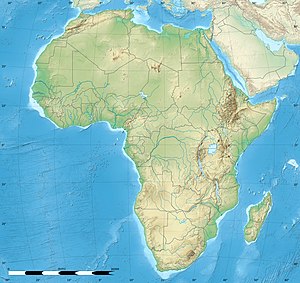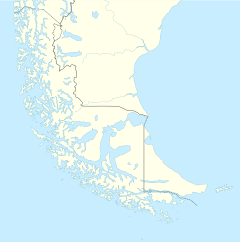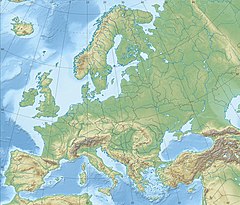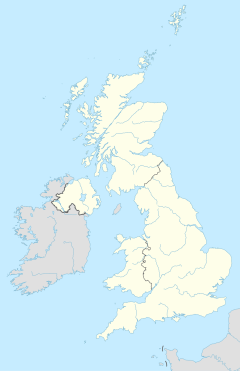| City | Population |
|---|
| City | Population |
|---|---|
| City1 | 540,921
|
| City2 | 194,343
|
| City3 | 190,414
|
| City4 | 134,669
|
| City5 | 114,983
|
Volcanic Explosivity Index Information
The Global Volcanism Program has assigned a Volcanic Explosivity Index (VEI) to all except five of Kīlauea's ninety-five known eruptions of the last 11,700 years. The eruption of 1790 has a VEI of 4. The eruptions of 1820, 1924, 1959 and 1960 have a VEI of 2. The eruptions of 680, 1050, 1490, 1500, 1610, 1868, four eruptions in 1961 and the current eruption since 1983 have a VEI of 1. The other seventy-four eruptions have a VEI of 0.
| VEI | Number of Holocene eruptions for which a VEI has been assigned (total=90) |
|---|---|
| VEI 0 | 74
|
| VEI 1 | 11
|
| VEI 2 | 4
|
| VEI 3 | 0
|
| VEI 4 | 1
|
According to the Smithsonian Institution's Global Volcanism Program, Vesuvius has had 54 confirmed "eruptive periods" during the Holocene Epoch (the last 11,700 years). A volcanic explosivity index (VEI) has been assigned to all but one of these eruptive periods.
| VEI | Number of Holocene eruptions for which a VEI has been assigned (total=53) |
|---|---|
| VEI 0 | 2
|
| VEI 1 | 2
|
| VEI 2 | 7
|
| VEI 3 | 29
|
| VEI 4 | 8
|
| VEI 5 | 5
|
Location map tests Information

Darwin Rise location map Information
Mid-Urals Ring Structure Information
Lake District location map Information
McDonald Islands location map Information
Danube Canyon location map Information
Cheddar Gorge location map Information
Volcanic Explosivity Index Information
The Global Volcanism Program has assigned a Volcanic Explosivity Index (VEI) to all of Mount Etna's eruptions since January 1955.
| VEI | Number of eruptions (total=49) |
|---|---|
| VEI 0 | 1
|
| VEI 1 | 17
|
| VEI 2 | 24
|
| VEI 3 | 7
|
Igneous rocks Template Information
Mohs hardness of moldavite Information
There seems to be lots of disagreement about the Mohs hardness of moldavite. Here are some of the Mohs hardness values and their sources:
| Source | Mohs hardness | Reference | Comments |
|---|---|---|---|
| Gemdat.org | 5.5 | [1] | |
| The Drilling Manual (5th edition)edited by Australian Drilling Industry Training Committee Limited, page 607 | 5.5 | [2] | |
| Gemmology by Peter G. Read, page 300 | 5.5 | [3] | |
| Gemstones of the World by Walter Schumann, page 246 | 5.5 | [4] | |
| Correlation of some physical and chemical properties of moldavites by V. Bouška and P. Povondra, Geochimica et Cosmochimica Acta, Volume 28, 1964, pages 783-791 | between 6.5 and 7 | [5] [6] | |
| Australian Museum | 6-7 | [7] | Hardness value is actually for tektites; moldavites are a type of tektite |
Geothermal gradient Information
25-30°C per km = 25–30 °C (45–54 °F) (°F per km). Convert from km to mi by multiplying 1.6093 = 40.2–48.3 °C (72–87 °F) (°F per mi).
Hoodoo Mountain - Featured Article review Information
Geography
Biogeography
"Forests grow on the lower slopes of Hoodoo Mountain except for its northeastern flank where rock and ice are dominant. Much of this forest cover lies at elevations below 900 metres (3,000 feet)."
I suggest these two sentences should be moved/merged into the preceding paragraph which mentions the forests, rock, ice and valley bottoms.
Climate
"Hoodoo Mountain has a maritime glacial climate".
Is “maritime glacial climate” a recognized valid climate type? Or is it actually a maritime climate but glaciers also happen to be in the region (as a coincidence)?
Geology
Background
"Other volcanic formations, notably subglacial volcanoes, take their shape from ...". A subglacial volcano is a landform not a formation.
What is the relationship/hierarchy of Stikine subprovince and Iskut volcanic field?
Iskut Volcanic Field has 8 centres (Hoodoo Mountain being one of those centres), but it seems that of these 8 centres, only Hoodoo Mountain is a NCVP centre? Are the other 7 centres of Iskut not regarded as NCVP centres?
Stikine subprovince "consists of three other volcanic centres" should be changed to "includes three other volcanic centres" or "has three other volcanic centres".
I think it would be helpful to clarify the meaning of "volcanic centre" compared to "volcanic field".
Structure
"It has a basal diameter of around 6 kilometres (3.7 miles), a maximum volume of 17.3 cubic kilometres (4.2 cubic miles)" – what is the significance of "maximum"? Why not only "volume"?
"Hoodoos, needle-like rock formations after which the volcano is named" – I suggest that "spire" or "pillar" would be better than "needle-like".
"The lower set of cliffs delimit the base of the volcano except for its southeastern margin where they have been partially overrun by younger lava flows. They are 100 to 200 metres (330 to 660 feet) high and form a broad bench" – I think the "they" in "They are 100 to 200 metres ..." should be clarified – I think this refers to the cliffs not the younger lava flows?
"the glassy chemical composition of the lava" – glassy is not a chemical composition - "chemical composition" should be changed to "glassy texture".
"The Southwest Flow is a large composite lava flow" - "composite lava flow” should be defined.
Volcanic history
"Some tephra layers in northern British Columbia may have been deposited by Hoodoo Mountain." Is this summarising the later paragraph about tephra at Dease Lake, Finlay River and Bob Quinn Lake? Without mentioning those locations in this summary paragraph, it reads oddly because Hoodoo Mountain is itself in northern British Columbia. I think it could be improved by adding a mention of how far away (in kilometres) from Hoodoo Mountain this tephra may have reached.
"Hoodoo has also been designated as a subglacial volcano due to much of the mountain having formed subglacially in the last 100,000 years." Did anything geologically or volcanically significant happen 100,000 to 85,000 years ago? If not, why mention 100,000 years? Elsewhere in the text, 85,000 years is mentioned: "The first eruptive period 85,000 years ago" and "The primary rock types comprising the volcano are phonolite and trachyte, which were deposited during six periods of eruptive activity beginning about 85,000 years ago".
Eruptive periods
Image of eruptive periods (File:Hoodoo Mountain eruptive periods.png): I suggest that ice is changed from blue (the traditional colour of liquid water in diagrams) to white (the traditional colour of ice in diagrams). Hoodoo Mountain is, after all, a subglacial volcano not submarine volcano.
"These volcanic deposits are mainly exposed on Hoodoo's southwestern and northwestern flanks": "Hoodoo’s" is too informal. I suggest it should be changed to "“Hoodoo Mountain's".
"devitrified glass with heterolithic clasts": Heterolithic should be defined.
"Lava flows on the north–central flank display radially-oriented cooling joints" – perhaps explain the significance of radial joints (as has been done with the horizontal joints in an earlier paragraph).
Tephra layers
I think it would be helpful to give some indication of the distances from Hoodoo Mountain to Dease Lake, Finlay River and Bob Quinn Lake.
Monitoring and volcanic hazards
This is geological subject and should become a subsection of the Geology section.
Notes
Several terms are both wikilinked in the main text and defined in the Notes section. Why? Wikilinks (and/or very brief inline definitions in parentheses) are usually sufficient. Why are only these several terms and not ‘’every’’ wikilinked word defined in the Notes section? I suggest these notes should be removed.
If the notes are kept, note 1 mentions "silicium" (which is copied from the cited source – perhaps the author/publisher forgot to translate it from another language e.g. French or German). In English, however, silicium seems to be an obsolete name for silicon (according to e.g. Collins English Dictionary) – "silicium" should be replaced by "silicon" – I suppose the same cited source reference could be used but a better source using “silicon” can be found easily.
— GeoWriter ( talk) 21:13, 28 October 2021 (UTC)
IMA Mineral name abbreviations Information
https://en.wikipedia.org/?title=Anorthite&oldid=1055555462
Canary Islands eruptions table Information
| Island | Holocene (last 11,700 years) | Modern Era (since c. 1480) | Modern Era eruption dates | Notes | Reference |
|---|---|---|---|---|---|
| La Palma | 14 | 8 | 1481, 1585, 1646, 1677–1678, 1712, 1949, 1971, 2021 | [8] | |
| El Hierro | 4 | 1 | 2011–2012 | [9] | |
| La Gomera | 0 | 0 | —— | [10] | |
| Tenerife | 42 | 5 | 1492, 1704, 1706, 1798, 1909 | [11] | |
| Gran Canaria | 11 | 0 | —— | [12] | |
| Fuerteventura | 0 | 0 | —— | No specific confirmed Holocene eruptions but Holocene eruptions are inferred by freshness of lava and volcanic landforms | [13] |
| Lanzarote | 4 | 2 | 1730–1736, 1824 | [14] |
Ordovician regional series and stages table Information
| ICS series | ICS stage | British series | British stage | North American series | North American stage | Australian series | Australian stage | Chinese series | Chinese stage |
|---|---|---|---|---|---|---|---|---|---|
| Upper Ordovician | Hirnantian | Ashgill | Hirnantian | Cincinnati | Gamach | Upper Ordovician | Bolinda | Late Ordovician | Hirnantian |
| Katian | Rawthey | Richmond | Chientangkiang | ||||||
| Cautley | Maysville | Easton | Neichiashan | ||||||
| Pusgill | Eden | ||||||||
| Caradoc | Strefford | Mohawk | Chatfield | ||||||
| Cheney | |||||||||
| Sandbian | Burrell | Turin | Gisborne | ||||||
| Aureluc | Whiterock | Chazy | |||||||
| Middle Ordovician | Darriwilian | Llanvirn | Llandeilo | Middle Ordovician | Darriwiliane | Middle Ordovician | Darriwilian | ||
| Abereiddy | Not defined | ||||||||
| Dapingian | Arenig | Fenn | Early Ordovician | Yapeen | Dapingian | ||||
| Whitland | Ranger | Castlemaine | |||||||
| Ibex | Black Hills | Chewton | |||||||
| Bendigo | |||||||||
| Lower Ordovician | Floian | Moridun | Tule | Lancefield | Lower Ordovician | Floian | |||
| Tremadocian | Tremadoc | Migneint | Stairs | Tremadocian | |||||
| Cressage | Skullrock |
- ^ https://www.gemdat.org/gem-10860.html
- ^ https://books.google.com/books?id=yYu9BwAAQBAJ&pg=PA607&lpg=PA607&dq=moldavite+mohs+hardness&source=bl&ots=aAYjprWB3m&sig=BGbEMkqm-ZKpsYOjOv294MGb5BY&hl=en&sa=X&ved=0ahUKEwjAy7HeguLXAhWFD8AKHe6XDFs4ChDoAQhWMAw#v=onepage&q=moldavite%20mohs%20hardness&f=false
- ^ https://books.google.com/books?id=b-7fBAAAQBAJ&pg=PA319&lpg=PA319&dq=moldavite+hardness&source=bl&ots=qoxtzWZiXu&sig=uBbkyiK8WYrH2SlS0mW9tOD-9hQ&hl=en&sa=X&ved=0ahUKEwiLq-ammuLXAhWjLMAKHbXBB2MQ6AEIMDAB#v=onepage&q=gemmology%20read%20moldavite%20hardness&f=false
- ^ https://books.google.com/books?id=V9PqVxpxeiEC&pg=PA246&lpg=PA246&dq=moldavite+mohs+hardness&source=bl&ots=H_L3QJAqPH&sig=6GhocLRP86RNtoYbMiCipmJ6ky4&hl=en&sa=X&ved=0ahUKEwi-x5DKhuLXAhXsJ8AKHXhiDKk4ChDoAQg5MAY#v=onepage&q=moldavite%20mohs%20hardness&f=false
- ^ http://www.sciencedirect.com/science/article/pii/0016703764900328
- ^ https://scholar.google.com/scholar?hl=en&as_sdt=0%2C5&q=moldavite+hardness&btnG=
- ^ https://australianmuseum.net.au/tektites
- ^ La Palma - Eruption history ; Smithsonian Institution Global Volcanism Program, retrieved 08 Nov 2023; https://volcano.si.edu/volcano.cfm?vn=383010
- ^ Hierro - Eruption history ; Smithsonian Institution Global Volcanism Program, retrieved 08 Nov 2023; https://volcano.si.edu/volcano.cfm?vn=383020
- ^ Tanguy, J-C. and Scarth, A. (2001) "Volcanoes of Europe", Harpenden, Terra Publishing, ISBN 1-903544-03-3, page 101
- ^ Tenerife - Eruption history ; Smithsonian Institution Global Volcanism Program, retrieved 08 Nov 2023; https://volcano.si.edu/volcano.cfm?vn=383030
- ^ Gran Canaria - Eruption history ; Smithsonian Institution Global Volcanism Program, retrieved 08 Nov 2023; https://volcano.si.edu/volcano.cfm?vn=383040
- ^ Fuerteventura - Eruption history ; Smithsonian Institution Global Volcanism Program, retrieved 08 Nov 2023; https://volcano.si.edu/volcano.cfm?vn=383050
- ^ Lanzarote - Eruption history ; Smithsonian Institution Global Volcanism Program, retrieved 08 Nov 2023; https://volcano.si.edu/volcano.cfm?vn=383060













